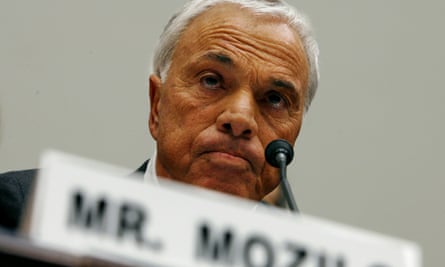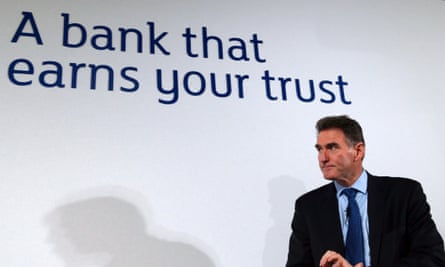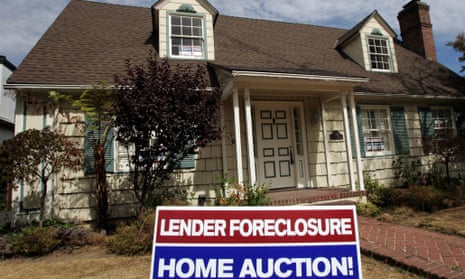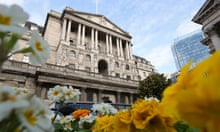Mortgages are hard to get, with demands for high credit scores and a perfect lending history, so some say it’s time to bring back subprime mortgage lending.
This is, obviously, a bad idea. The financial industry has plenty of reasons to offer the same high-risk, high-return loans that made so many bankers rich during the housing bubble before everything crashed. But it’s less clear why any sensible commentator wants to cheer the industry on.
Story after story lately follows the same flawed logic: the shoddy lending that caused the financial crisis has now swung too far in the other direction, preventing deserving people from getting mortgages. The poor or middle class can’t access credit, which is the fault of “over-regulation” of banks.
This strange thinking is becoming more prevalent and commanding larger platforms. For example, Binyamin Appelbaum, in a New York Times magazine story this weekend, wondered if subprime mortgages should make a comeback. “The lending freeze is not just preventing people … from chasing their dreams. It’s bad for the overall economy too.”
Maybe this sounds reasonable to pundits. Lending ran too hot, so obviously now it’s running too cold.
But we should question this perceived wisdom. Instead of just buying the false reasoning that self-interested industry lobbyists whisper in an effort to make regulations disappear, maybe it’s time to look at the other factors holding back the mortgage market.

The first and most important factor, for instance: most people don’t have any money to buy a house.
The Federal Reserve’s recent survey of consumer finances found that median income dropped 12.4% between 2004 and 2013, a dramatic decline in fortunes. The US Census bureau’s annual poverty report shows that real median household income peaked at $56,895 – all the way back in 1999.
Only incomes at the very top have grown; for everyone else they’ve contracted.
Consider this incredible statistic from the research analyst Redfin: through this April, sales of the McMansions of America – the top 1% of homes by price – rocketed up 21% compared to last year.
But sales of the other 99% of homes were down 7.6%.
In other words, we have two housing markets, one for the rich and one for the rest.
This mirrors our unequal economy generally, and it’s the proximate reason why most Americans feel like we’re still in a recession.
This bifurcation between rich and poor has naturally led to a vanishing of homes for sale in the middle market. New construction has increasingly concentrated on the high end: luxury condos or mini-mansions.
The square footage of homes shot up 9% last year alone, because “that’s where the demand has been”, Sam Khater of research firm CoreLogic told the Washington Post.
Meanwhile, multi-family housing construction has surged, as builders recognize that only rentals or mansions can sell. Since not everybody is in the top 1% – in fact, only 1% are! –this understandably leads to lower overall home purchases.
So it’s not surprising to see a drought in lending, and a reduction in homeownership rates from 69% in 2005 to 65% at the beginning of 2014. It has nothing to do with bank regulation; it has to do with the wrong supply of houses for the current demand.
Yet the drumbeat grows for the return of subprime, with think tanks getting in on the action. An Urban Institute study claims that lenders could issue 1.2m more mortgages simply by returning to the lending standards of 2001.
But economist Dean Baker dispatches with this argument, noting that the housing market was already overheated by 2001, with prices out of line with historical trends.
The only thing “wrong” with the housing market is what’s wrong with the broader economy, and if you want to fix it, you only have a couple solutions: better wages or loans to people who cannot afford them. I know what looks better from here.
In fact, the New York Federal Reserve just ran a study of why younger households, the kind you would expect to step up as first-time homebuyers, are not purchasing mortgages. The only two responses with majority support were “do not have enough money saved, or have too much debt” and “do not make enough money”.
Coming in third place was “my credit is not good enough”, which led the Washington Post’s Dina ElBoghdady to spin an entire article about tight credit as a major factor in the housing slowdown. But the survey respondents could check more than one reason for not buying a home. And if a majority feels they don’t make enough money and carry too much debt to own, of course they would have anxiety over their credit score.

The Washington Post ran another article stating outright that government regulators – particularly those at mortgage giants Fannie Mae and Freddie Mac – discouraged lending to borrowers with low credit scores. The argument was that Fannie and Freddie purchase a large majority of loans made today, and if they find misrepresentation after the fact, they will demand that the lender buy them back. Because of this tight regulatory noose, ElBoghdady claims, lenders have become more cautious, and refuse to work with low- or moderate-income borrowers.
It’s hardly an original thought, but its origins are chilling. The argument that Fannie and Freddie are killing low-income lending matches precisely with what Wells Fargo CEO John Stumpf and JPMorgan Chase CEO Jamie Dimon argued last month.
But the facts tell a different story. The lenders basically want it both ways: they want Fannie and Freddie to take all the risk while they take all the gains. Freddie Mac’s own inspector general wrote in a 2011 report that the agency did not go after bad loans strongly enough, letting banks off the hook for passing them junk. A subsequent report from the inspector general found Fannie and Freddie negligent in failing to sanction banks over making spurious insurance claims. Fannie and Freddie are hardly tough-as-nails regulators punishing banks; the two agencies could barely review the claims they were supposed to.
Nevertheless, these crocodile tears from the banking industry get an all-too-successful airing. Bankers know that the complaints can act as a lever to pry away pesky regulations that put a limit on irresponsible practices.

For example, the banking industry has backed a House Republican bill called the Access to Affordable Mortgages Act, which would exempt “high-risk” mortgage loans under $250,000 from standards like property appraisals.
This is basically a license to rip off homeowners by removing the safeguard of an independent valuation of the home.
But if banks keep whining that they are prevented from lending to low-income borrowers – and the press gives their argument a helping hand – suddenly this kind of pretext to predatory lending starts to look reasonable.
To see where a return to deregulation can take us, look merely at the fast-decaying market in subprime auto loans, not coincidentally the only lending sector not monitored by the Consumer Financial Protection Bureau, thanks to a legislative carve-out.
Lenders have encountered higher-than-expected defaults, in what could be the beginning of a wider crash. These subprime loans have driven a temporary resurgence in auto production and boosted the economy, but if the market washes out, nobody will say it was worth it.
Banks destroyed the housing market when they were allowed to ignore lending standards and sell whatever loans they wanted with impunity. They’re not exactly disinterested observers when they talk about regulation. Considering that they’re asking for the keys to the sports car they just wrecked, we might want to take their claims with a mountain of salt.








Comments (…)
Sign in or create your Guardian account to join the discussion